This Blu-ray box set is currently available from Arrow Video.
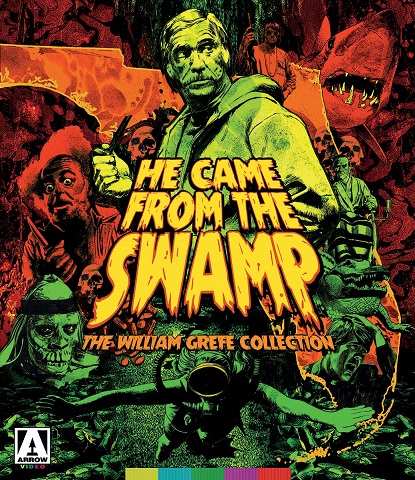
If you’ve ever stayed up late at night watching low-budget monster movies on cable, then you’ve probably seen a William Grefé flick. Considered by many genre enthusiasts to be a Florida exploitation film king, this writer/producer/director made a great many independent flicks in his home state primarily through the 1960s and 70s. While he did create a few dramas, his most famous pictures were creature features and psychedelic drive-in efforts. In honor of his 90th birthday, Arrow Video have assembled seven notable movies from his catalog and a recent feature-length documentary in their new 4-disc Collector’s Set, He Came from the Swamp: The William Grefé Collection.
This box of Blu-rays is every bit as extensive as you might have imagined. In addition to the movies, the set arrives with numerous bonuses including a book containing a forward by Grefé, a brief biography by a film critic and loads of production stills, lobby cards and other publicity materials. Additionally, there are printed interviews with comments from Grefé about each title. Of course, you also get the features themselves, which are a wild and crazy assortment of B-movies. So, for those needing a bit more background information on the specific movies in question, here is exactly what you’ll be in for…
Disc 1 includes Sting of Death (1966), a goofy monster movie about a professor of marine biology in the Everglades working with his favorite student and a disfigured assistant named Egon. When the faculty member’s daughter arrives with some friends to have a party at her dad’s island home (which involves a lot of footage of the gang dancing to the music of Neil Sedaka), they are eventually attacked by a jellyfish monster. As it turns out, Egon has been conducting experiments of his own that have given him the power to turn into a half-man, half-jellyfish monster… and he has an obsession with the daughter of his employer. The creature get-up essentially involves a performer with a wet suit covered in mud along with a clear, air-filled garbage bag over his head. It’s an amusingly ridiculous cheese-fest.
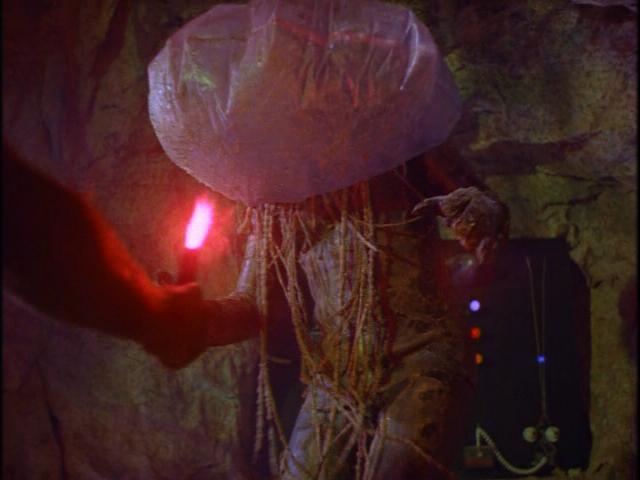
In Death Curse of Tartu (1966), the villain is the resurrected corpse of a 400-year-old Native American witch doctor Tartu, who has the power to transform into any wild creature and kill those who disturb his ancient burial mound (to be honest, it’s really more of a cave). Naturally, a professor and some archeology students arrive on site and do all the wrong things, becoming targets of the supernatural entity. The kids also find the time to dance in the marsh and there’s a lot more unnecessary padding in this effort, but Tartu himself is an interesting and more fully realized monster. It’s all very silly, but some of the attack scenes (one involving a python and another using a crocodile) do look dangerous.
Both films come with an introduction from Grefé who briefly explains the how each film came into existence. The disc also includes a fun featurette about beach-party monster movies, as well as the spook-show career of the make-up designer who played the Jellyfish Monster. Each title also includes an informative commentary involving Grefé and interviewer Frank Henenlotter (Basket Case, Brain Damage) who talk about the productions and the difficulties involved in shooting a B-movie in the swampy Everglades. Amusingly, we learn that the Tartu was produced on the fly after the distributor of Sting of Death need a second feature to play with the movie at drive-ins. It was written in 24 hours and was shot and produced over a much shorter time frame (which certainly explains the padding and pacing issues).
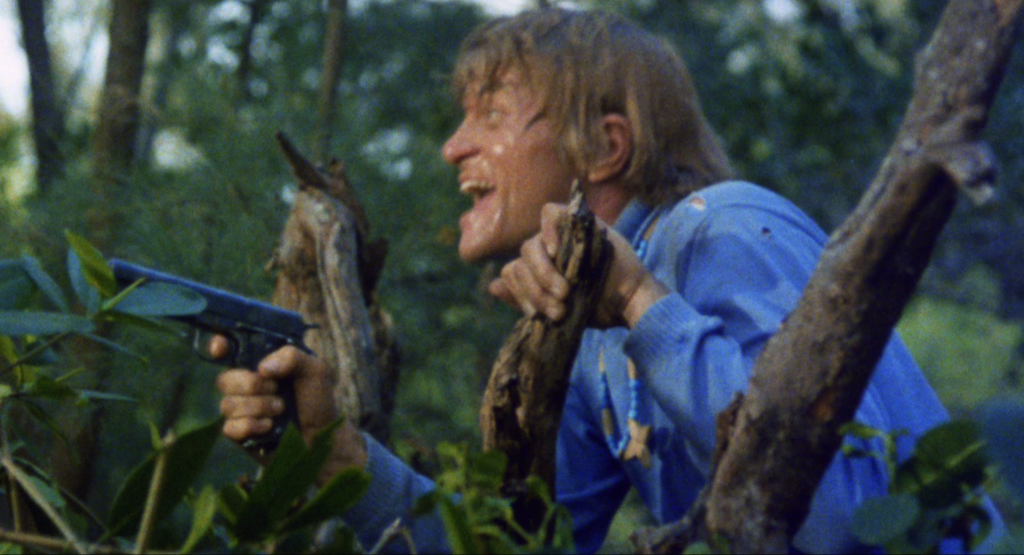
The second disc contains some of the filmmaker’s experiments in psychedelia. In comparison with the previous features, The Hooked Generation (1968) is much more ambitious in scope and subject matter. The plot follows a group of pals making inroads in the drug trade, turning from carriers to mini-cartels and making their own deals with Cuban soldiers to import heroin, cocaine and marijuana into Florida. They’re not great at their jobs. One of them develops a serious habit, they buddies take hostages and, as expected, violence ensues when they get into conflicts with suppliers, the Coast Guard and just about every other person they encounter. It’s a low-budget B-movie, but a very competent one with solid performances. There are some interesting camera angles and on a technical level the flick feels reminiscent of an early George Romero picture like Season of the Witch.
The Psychedelic Priest (1971) is a film shot slightly afterwards that wasn’t released until 2001. It’s about a Catholic priest going through a crisis of faith who drops out of his habit and goes on a trippy journey to find himself. In the introduction to the picture, Grefé states that a producer hired him to make a counterculture movie without a script, so he traveled around with the lead actor and improvised everything. Some bits work better than others and the protagonist ultimately doesn’t have anywhere to develop to except back to his original starting point, but it serves as an interesting experiment with some intriguing moments.
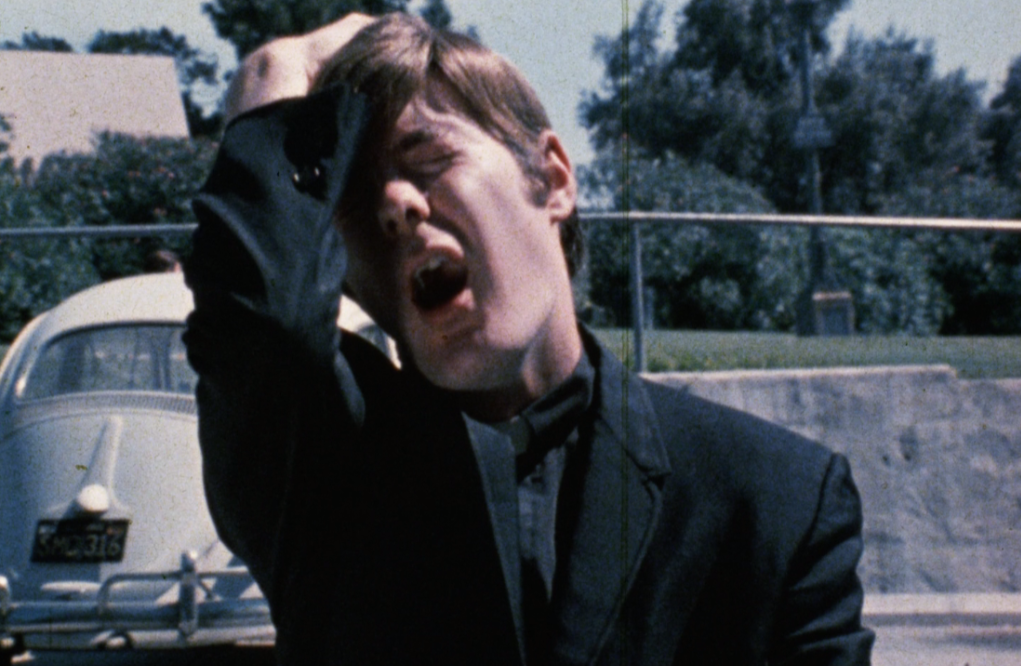
As for extras, there’s a fun featurette on “drugsploitation” films and another specifically dealing with The Psychedelic Priest and the bizarre story behind its creation. You’ll get a lot of publicity materials related to The Hooked Generation. And in addition to the director introductions to each title, both come with commentary tracks. Grefé has great stories about The Hooked Generation cast and the production, including some scary tales about the inexperienced crew shooting action scenes and the crazy way in which the filmmaker promoted the movie to teens… which involved giving pill capsules out to teens in front of schools with a message hidden inside about the movie’s upcoming release. His stories of the Priest movie shoot are even crazier and is easily just as entertaining than the feature.
Disc 3 contains the Director’s Cut of The Naked Zoo (1970). It’s another trip into hippy culture that boasted the filmmaker’s largest budget at the time, which by Grefé’s estimation was $250,000 dollars. Set in the Florida community of Coconut Grove (which was the Florida equivalent of the Haight-Ashbury district in San Francisco), a pill-popping, womanizing novelist gets himself into serious trouble. The biggest problems arise when he begins an affair with an older socialite, played by Rita Hayworth. Her husband discovers the affair and violence erupts with deadly consequences. There are some good moments and a nice sting at the end of the movie, even if it isn’t quite as strong as The Hooked Generation.
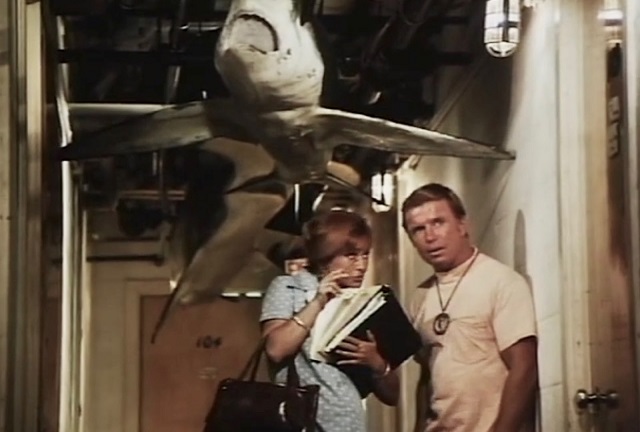
The next film, Mako: The Jaws of Death (1976), arrived just a year after Jaws and was dismissed as a knock-off of the Steven Spielberg feature. Grefé wants everyone to know that the script was written many years earlier and that he was only able to finance the picture after Jaws became a smash hit. Richard Jaeckel plays a local eccentric who believes he has a psychic connection to the area’s tiger shark population (amusingly, the mako variety is not featured in the movie), because of a medallion he given to him while serving in the Philippines. He frequently talks to the fish and acts as a protector, killing any human whom he believes is causing harm to them. Naturally, he also feeds his victim’s body parts to the sharks. It’s an interesting concept, there’s some impressive underwater footage and the lead actor makes for an entertaining antihero. It’s certainly a cheesy B-movie, but a fun one in many respects.
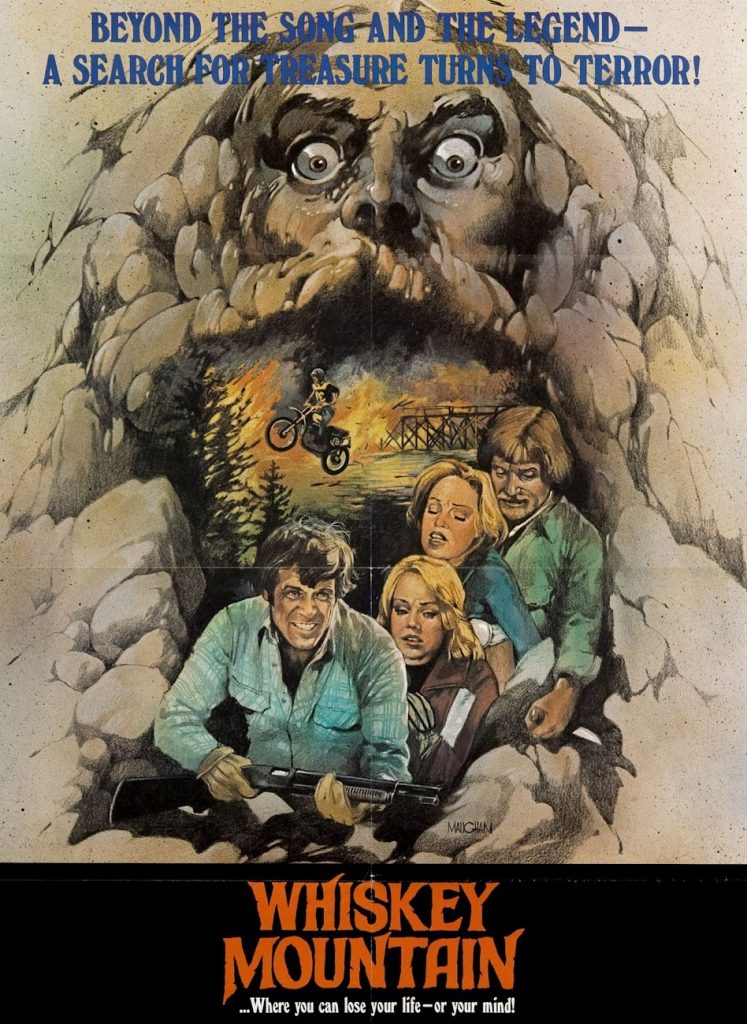
Extras on The Naked Zoo include a commentary that details how he managed to nab bigger names for the film and well as his hatred for the theatrical cut. He explains that one of his investors bought a controlling interest in the film. The person re-edited the movie and added explicit sex scenes to it – this disc also includes the alternate cut as a curiosity. While the picture quality on the Director’s Cut isn’t as sharp, it is largely because Grefé has taken out several scenes and added deleted footage back in, reassembling the feature as originally intended. There’s a ton of bonus material on Mako: The Jaws of Death, including an informative commentary track, 2020 telephone interviews with co-star and the film’s screenwriter, lots of publicity materials, as well as a featurette giving a brief history of nature-on-the-rampage movies. There’s a lot of great information on the latter movie and Grefé tells great stories about it. This includes a terrible first day of shooting in which the camera broke, one of the ships being used became lodged on a sandbar and lead performer Richard Jaeckel split his head open while waiting to begin work. It’s an entertaining track.
Disc 4 contains Whiskey Mountain (1977), a thriller inspired to some degree by the hit film Deliverance. This one is about a pair of mountain bikers and their wives on a treasure hunt for Confederate rifles, which they plan to sell to collectors after locating. While in the mountains, the couple are attacked by a gang of hillbilly drug dealers, who take them hostage and torment them. This is a rare feature for the filmmaker that was shot entirely in North Carolina and Georgia. Frankly, it has some decent action and stunts at the close, but has plenty of issues. The photography is soft, the framing off at various points and it generally feels sloppily put together. The director’s commentary explains what brought the filmmaker to this area and the how he managed to get country music artist Charlie Daniels to record a song for the picture. He also shares another wild tale about a fight with locals at the wrap party.
And finally, the disc comes with a They Came from the Swamp (2016), a phenomenal 2-hour documentary on Grefé that shares insights and highlights of his life and career. There are interviews and comments from actors like William Shatner, crew members and filmmakers including Herschell Gordon Lewis, Fred Olen Ray and Frank Henenlotter. You’ll also get an early documentary short from Grefé, deleted interviews from the documentary, a trip to some of the locations featured in the films, a featurette on distributor Crown International Pictures, and plenty more.
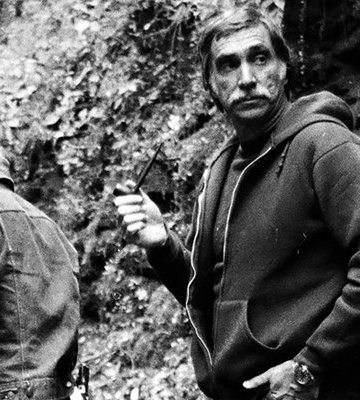
The image quality on display isn’t phenomenal (Whiskey Mountain and the Director’s Cut of The Naked Zoo in particular have plenty of issues), but all the transfers are an improvement over anything previously released on DVD and other formats. According to reports, the original prints and material was in the process of disintegrating and it’s remarkable that these movies were salvaged at all. Fans of the flicks can expect a drive-in like experience. It doesn’t look perfect and there are various problems that are evident, but they’ve managed to do their best to save the movies from being permanently lost.
Like everything else from Arrow Video, the distributor has done its best to give fans the best possible package and experience. The box set’s extras are amazing and it’s a whole lot of fun in general to visit these old B-movies. And the package also includes a great fold out poster with the cover art featuring creatures and notable characters from the movies included in the set. In the end, B-movie fans will likely be pleased by all of the mayhem included in He Came from the Swamp: The William Grefé Collection Collector’s Edition.


